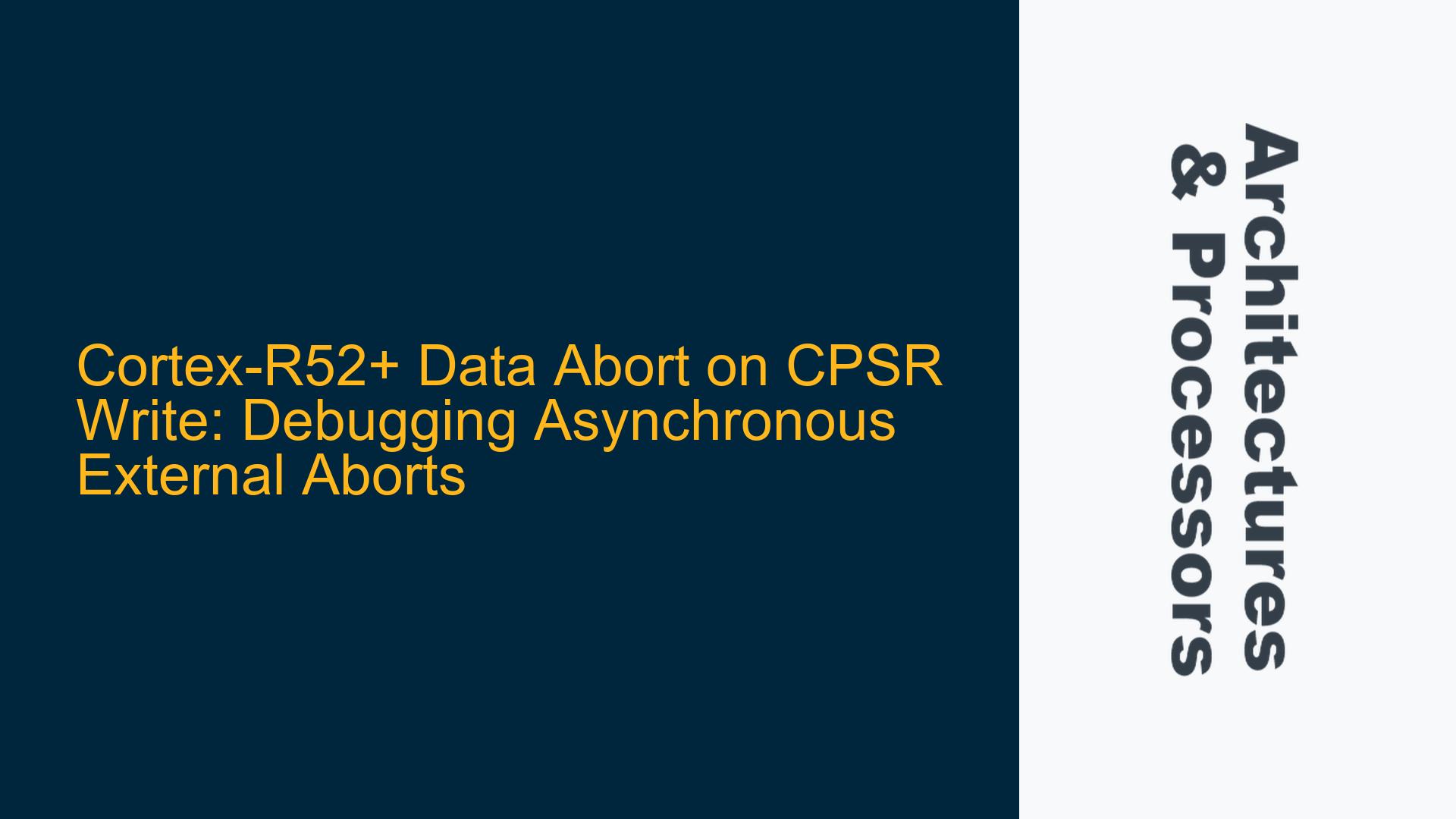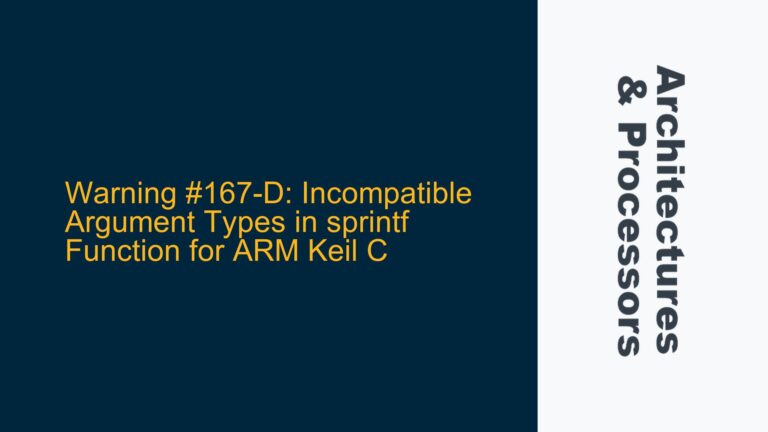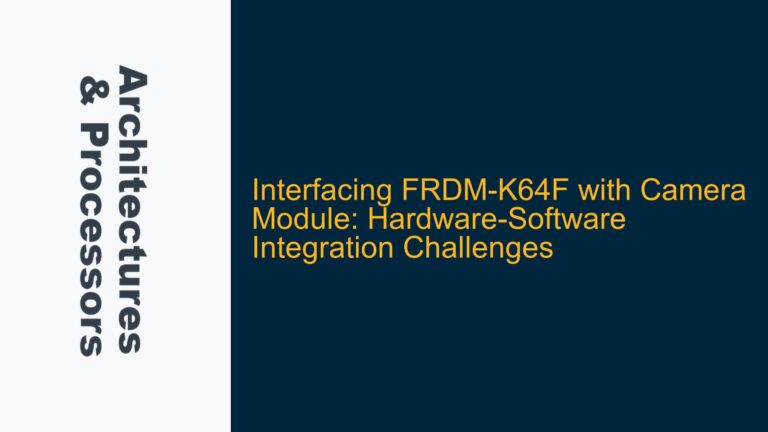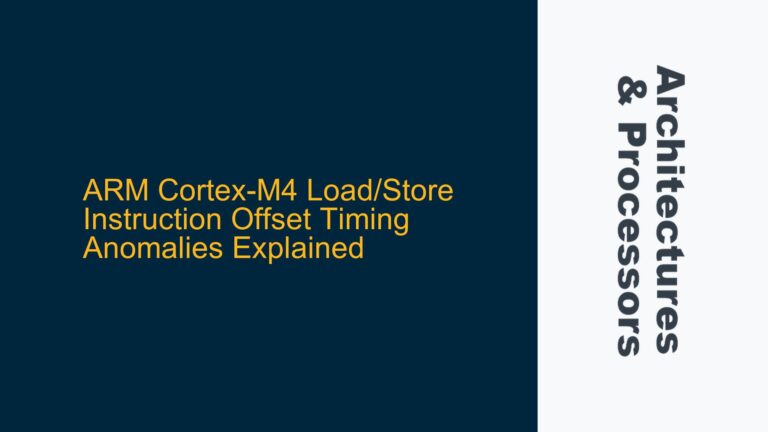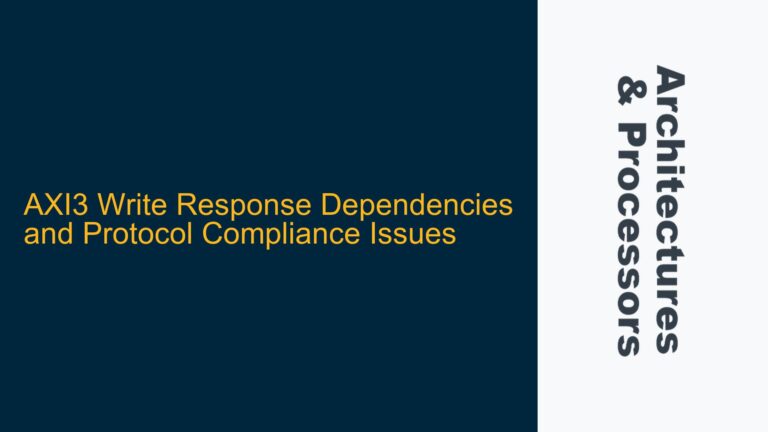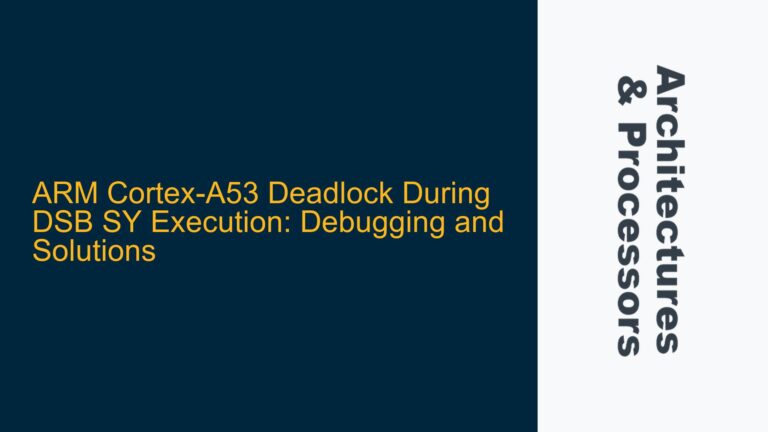ARM Cortex-R52+ Data Abort Triggered by CPSR Write Operation
The Cortex-R52+ processor is a high-performance, real-time capable core designed for safety-critical applications. It is common to encounter complex hardware-software interaction issues when working with such architectures, especially when dealing with low-level register manipulations. One such issue arises when executing the MSR CPSR_cx, #0x1F instruction, which results in a data abort. The Data Fault Status Register (DFSR) reports a value of 0x1A11, indicating an asynchronous external abort for a write operation, and the Data Fault Address Register (DFAR) contains 0x00000000. This scenario suggests a critical fault in the system, likely tied to the handling of asynchronous aborts and the Current Program Status Register (CPSR).
The CPSR is a critical register in ARM architectures, controlling the processor’s operating mode, interrupt masks, and other system states. Writing to the CPSR requires careful consideration of the current system state and the implications of modifying its bits. In this case, the fault occurs when attempting to clear specific bits in the CPSR, particularly the interrupt masks and the asynchronous abort mask (CPSR.A). Understanding the root cause of this issue requires a deep dive into the ARM architecture, the behavior of asynchronous aborts, and the specific implementation details of the Cortex-R52+.
Asynchronous Abort Masking and CPSR.A Bit Manipulation
The primary cause of the data abort lies in the manipulation of the CPSR.A bit, which controls the masking of asynchronous aborts. Asynchronous aborts, also known as SErrors (System Errors), are critical faults that can occur due to external events, such as memory access violations or bus errors. These aborts are typically masked during normal operation to prevent system crashes, but unmasking them can reveal previously hidden faults.
In the described scenario, the CPSR value before the write operation is 0x200001DF. This value indicates that the processor is in System mode (CPSR.M = 0x1F), with interrupts and asynchronous aborts masked (CPSR.I, CPSR.F, and CPSR.A bits set). The MSR CPSR_cx, #0x1F instruction attempts to write 0x001F to the lower 16 bits of the CPSR, effectively clearing the CPSR.I, CPSR.F, and CPSR.A bits. This action unmasks asynchronous aborts, leading to the immediate triggering of a previously pending asynchronous external abort.
The DFSR value 0x1A11 confirms that the abort is asynchronous and external, with no specific fault address (DFAR = 0x00000000). This behavior suggests that the abort was caused by an external event, such as a bus error or memory access violation, which occurred while asynchronous aborts were masked. The fault only becomes visible when the CPSR.A bit is cleared, exposing the underlying issue.
Diagnosing and Resolving Asynchronous External Aborts in Cortex-R52+
To diagnose and resolve this issue, a systematic approach is required, focusing on identifying the root cause of the asynchronous abort and ensuring proper handling of the CPSR.A bit. The following steps outline the troubleshooting process:
Step 1: Analyze System State Before CPSR Write
Before modifying the CPSR, it is essential to analyze the system state to identify any potential sources of asynchronous aborts. This includes reviewing the processor’s operating mode, interrupt masks, and pending exceptions. Use the following techniques:
- Check Exception State: Use the Exception Syndrome Register (ESR) to determine if any exceptions are pending. The ESR provides detailed information about the type and cause of exceptions, including asynchronous aborts.
- Review Memory Access Patterns: Analyze the memory access patterns leading up to the CPSR write operation. Look for any invalid or unaligned memory accesses that could trigger an asynchronous abort.
- Inspect Bus Transactions: Use debug tools to monitor bus transactions for any errors or violations. External aborts are often caused by bus errors, such as invalid addresses or access permissions.
Step 2: Implement Proper CPSR.A Bit Handling
The CPSR.A bit should only be cleared when the system is in a stable state and there are no pending asynchronous aborts. To ensure proper handling, follow these guidelines:
- Mask Asynchronous Aborts During Critical Sections: Keep asynchronous aborts masked during critical sections of code where external events could disrupt execution. Use the
CPSID Ainstruction to mask asynchronous aborts andCPSIE Ato unmask them when safe. - Clear Pending Aborts Before Unmasking: Before unmasking asynchronous aborts, ensure that any pending aborts are cleared. This can be done by reading the DFSR and DFAR registers to acknowledge and handle any pending faults.
- Use Data Synchronization Barriers: Insert Data Synchronization Barriers (DSB) before modifying the CPSR to ensure that all pending memory operations are complete. This prevents asynchronous aborts caused by incomplete memory transactions.
Step 3: Debug and Resolve the Root Cause of the Abort
Once the system state is stable and the CPSR.A bit is properly handled, the next step is to debug and resolve the root cause of the asynchronous abort. This involves:
- Identify Faulting Memory Access: Use the DFAR and DFSR registers to identify the memory access that caused the abort. The DFAR contains the faulting address, while the DFSR provides details about the type of fault.
- Check Memory Map and Permissions: Verify that the faulting address is within the valid memory map and that the access permissions are correct. Ensure that the memory region is properly configured and accessible in the current processor mode.
- Review External Hardware: If the abort is caused by an external event, such as a bus error, review the external hardware for any issues. Check for signal integrity problems, timing violations, or incorrect configurations.
Step 4: Implement Robust Error Handling
To prevent future occurrences of this issue, implement robust error handling mechanisms that can detect and recover from asynchronous aborts. This includes:
- Exception Handlers: Implement exception handlers for asynchronous aborts that can log the fault details and recover the system. Use the DFSR and DFAR registers to gather information about the fault and take appropriate action.
- Watchdog Timers: Use watchdog timers to detect and recover from system hangs caused by unhandled asynchronous aborts. Configure the watchdog to reset the system if an abort is not handled within a specified time.
- System Monitoring: Implement system monitoring tools that can detect and report abnormal behavior, such as frequent asynchronous aborts or memory access violations.
Step 5: Validate System Stability
After implementing the above steps, validate the system stability by running extensive tests and stress tests. This includes:
- Functional Testing: Test the system under normal operating conditions to ensure that the CPSR modifications do not cause any issues.
- Stress Testing: Run stress tests that simulate high-load conditions and external events to verify that the system can handle asynchronous aborts without crashing.
- Long-Term Testing: Conduct long-term testing to ensure that the system remains stable over extended periods of operation.
By following these steps, you can diagnose and resolve the issue of the Cortex-R52+ going to abort when writing to the CPSR. The key is to understand the behavior of asynchronous aborts, properly handle the CPSR.A bit, and implement robust error handling mechanisms to ensure system stability.
